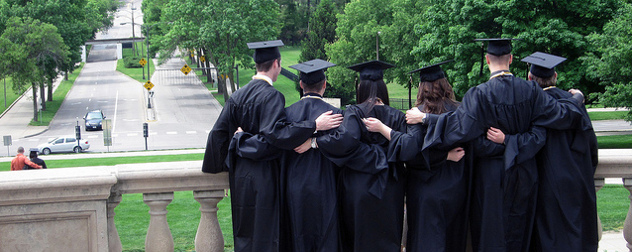For a bunch of alleged serial killers, millennials have gotten a bad rap.
For years, a journalist looking for a quick headline has needed to look no further than “industries that millennials are killing.” The formulation is familiar to anyone who regularly reads or listens to the news. In 2018 alone, millennials were accused of killing everything from credit cards to beer to American cheese. (Sorry, Kraft.) In 2017 Tim Gurner, a then-35-year-old Australian millionaire, told his fellow millennials to lay off the avocado toast if they wanted to be homeowners one day, spawning a new subset of “millennial as bad consumer” tropes.
A closer look suggests that millennials don’t deserve all this derision. Rather than an emotionally fragile and narcissistic cohort stuck in arrested development, millennials are a group of younger adults who were dealt an especially challenging economic hand. They seem to be making the best of it.
While precise definitions vary, the Pew Research Center defines millennials as the generation born between 1981 and 1996. Other observers move these dates by a year or two, but the generation broadly encompasses people who are in their early to mid-twenties to their mid- to late thirties. While the baby boom following World War II was a set phenomenon defined by the U.S. Census Bureau, subsequent generational divides are somewhat arbitrary. A person born in 1981 likely has more in common with someone born in 1980 than someone born in 1996, regardless of where generational boundaries lie. But if we want to talk about millennials as a group at all, it is important to be realistic about the circumstances that have shaped their lives.
Many older adults don’t understand how hard millennials have it, especially from an economic point of view.
The Federal Reserve released a study in November 2018 suggesting that millennials’ spending patterns did not reflect a significantly different attitude to the milestones that defined the baby boomers and Generation X. “We find little evidence that millennial households have tastes and preference for consumption that are lower than those of earlier generations, once the effects of age, income, and a wide range of demographic characteristics are taken into account,” the study’s authors wrote. Differences in average income relative to age accounts for most of the differences in when and how millennials spend money compared to earlier generations.
One real difference between millennials and their predecessors is the rate of educational debt. According to the Fed, college graduates under the age of 35 are nearly 50% more likely to carry student loan debt than members of Gen X, and their median loan balance is about 40% higher. Outstanding total student loan debt in the U.S. reached $1.5 trillion in 2018. Debt has served as a drag on entrepreneurship and homeownership alike, forcing young workers to be more conservative and take fewer financial risks.
Part of the reason so many college-educated millennials carry debt is that education has become much more expensive. According to the National Center for Education Statistics, average tuition for a public university between 1973 and 1976 cost about 306 hours of minimum wage work; between 2003 and 2006, that average jumped to 4,459 hours. The gap between the growth in tuition and the growth in wages means each class of graduates is worse off than the one before.
For the millennials who graduated into the Great Recession, it has been especially hard to get a career back on track. William Spriggs, an economics professor at Howard University, observed: “A lot of workers were just 18 at the wrong time. Employers didn’t say, ‘Oops, we missed a generation. In 2008 we weren’t hiring graduates, let’s hire all the people we passed over.’ No, they hired the class of 2012.” The millennials who went to college got jobs that paid less than they otherwise might have. Millennials who didn’t go to college struggled to get jobs at all.
Besides the real dollar cost, the Great Recession may have had effects that are harder to quantify. Kimberly Greenberger, a Morgan Stanley analyst, told Business Insider in 2017 that she believes young adults who came of age during or just after the housing bubble burst show changed spending habits that have lingered long after the economy recovered. “I think we have got a very significant psychological scar from this great recession,” Greenberger said.
Yet as time passes, it seems likely that many young adults deferred, rather than bypassed, major milestones. Evidence increasingly suggests that millennials’ failure to make major purchases was less a sign that they didn’t want houses and cars than that they couldn’t afford them. As the Fed reported last year, baby boomers and Gen Xers made significantly more than their millennial counterparts at the same ages. Controlling for income wiped out the differences in the pace of homeownership.
It does not help that homes are more expensive relative to income these days. According to the Joint Center for Housing Studies of Harvard University, the average home price to income ratio was 30% higher in 2017 than it was in 1988. In some cities, it has risen even more sharply. Millennials are buying cars, but as cars get more expensive, they’re largely buying cheaper used models.
Millennials are also delaying marriage and children compared to earlier generations. In 2015, 38.5% of 18- to 34-year-olds were married, compared to 52.3% in 1990. The share of households in that age group who reported never having married or having children jumped from 27.6% in 1990 to 40.1% in 2015. While it is simplistic to claim this is purely an economic choice, it is fair to say that there is an economic component. Such decisions can also influence one another. For example, traditionally marriage is a moment when many renters transition to homeownership. Delaying marriage may contribute to delaying buying a home.
As millennials age out of the “kids these days” news slot, some journalists are ready to start wringing their hands over Generation Z instead. A recent article in The Wall Street Journal cited tumbling rates of teenagers with driver’s licenses as potential evidence that “Americans’ love affair with the automobile may no longer be something car makers can bank on.” While the first culprit mentioned is ride-hailing companies like Uber and Lyft, the article also notes that cars and the fees to get a license have both gotten more expensive.
My personal thinking on millennials has evolved over the years. While stories of recent college grads bringing their parents to job interviews or demanding immediate promotions were real, they don’t represent the entire age group. I find millennials to be as hard-working and earnest as any other generation. Their technology skills, including the ability to adopt new technologies on the fly, are a huge asset that older generations do not necessarily share. Each generation seems to look down on the next generation. When I look at my two small children, I can easily imagine a day when their generation is subject to the same treatment from middle-aged millennials that millennials are getting from baby boomers and Gen Xers now.
Millennials have gotten a slower economic start and still face very real financial headwinds. Older generations would do well to give them a break and put the stereotype of the entitled young worker with a mouth full of avocado toast to bed.













May 30, 2019 - 5:09 pm
Great article.